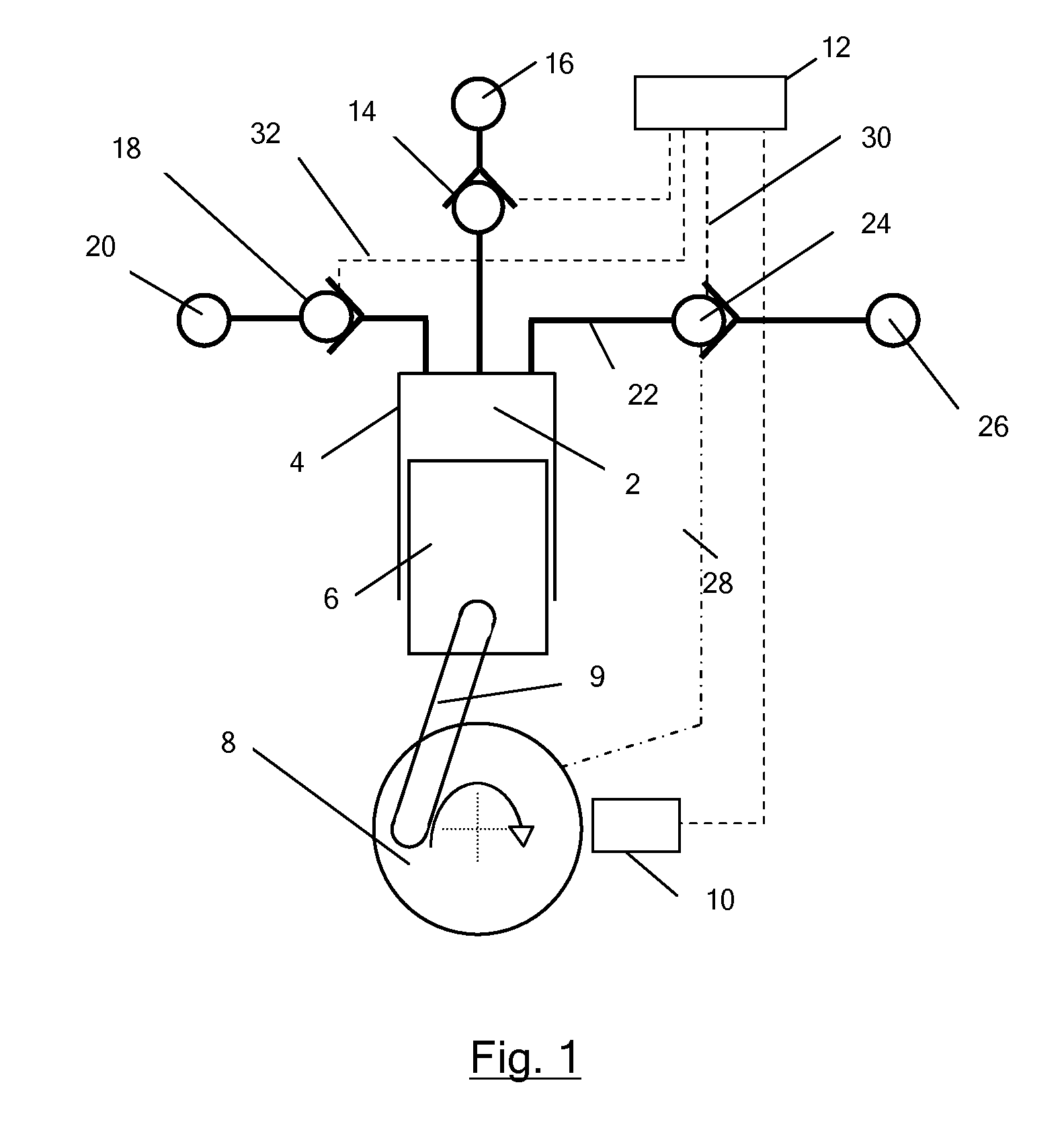Fluid working machines and methods
a working machine and working method technology, applied in mechanical equipment, water supply installation, gas/liquid distribution and storage, etc., can solve the problems of reducing efficiency, increasing noise, and expensive performance limiting components of electric controllable valves, so as to facilitate the opening of primary low-pressure valves, reduce the and reduce the effect of pressure within the working chamber
- Summary
- Abstract
- Description
- Claims
- Application Information
AI Technical Summary
Benefits of technology
Problems solved by technology
Method used
Image
Examples
example one
[0099]In a first example, a fluid working machine in the form of a hydraulic pump includes a plurality of working chambers. FIG. 1 illustrates an individual working chamber 2 which has a volume defined by the interior surface of a cylinder 4 and a piston 6 which is driven from a crankshaft 8 by a crank mechanism 9 and which reciprocates within the cylinder to cyclically vary the volume of the working chamber. A shaft position and speed sensor 10 determines the instantaneous angular position and speed of rotation of the shaft, and transmits shaft position and speed signals to a controller 12, which enables the controller to determine the instantaneous phase of the cycles of each individual working chamber. The controller is typically a microprocessor or microcontroller which executes a stored program in use.
[0100]The working chamber comprises a primary low pressure valve in the form of an electronically actuatable face-sealing poppet valve 14, which faces inwards toward the working c...
example two
[0109]In a second example, the fluid working machine is operable to function as either a motor or a pump. The structure of the second example fluid working machine also corresponds to the structure illustrated in FIG. 1. In this embodiment, the primary low pressure valve functions as a net source of fluid or a net sink in pumping or motoring mode respectively. The secondary low pressure port also functions as either a net source of fluid or net sink respectively, and the high pressure valve functions as either a net sink of fluid or net source respectively. A single low pressure manifold functions as either a net source of fluid, in pumping mode, or as a sink of fluid, in motoring mode, and the high pressure manifold functions as either a sink of fluid, in pumping mode, or as a source of fluid, in motoring mode. During idle strokes in which a working chamber is kept in fluid communication with the low pressure manifold, neither manifold functions as a net source or sink of fluid.
[01...
example three
[0113]In a third example embodiment a fluid working machine in the form of a hydraulic radial piston pump uses a slotted crankshaft to provide a secondary low pressure port. FIG. 3 illustrates fluid flow through an individual working chamber 100, defined by the interior surface of a cylinder 102 and reciprocating hollow piston 104, part way through an expansion stroke.
[0114]The working chamber has a primary low pressure valve 106, in the form of an electronically controllable poppet valve, which is openable and closable to bring the working chamber into and out of fluid communication with a first low pressure manifold 108. A high pressure valve in the form of a pressure-operable discharge valve 110 is openable and closable to bring the working chamber into and out of fluid communication with a high pressure manifold 112. The base 114 of the piston is in sliding contact with a crankshaft eccentric 116. An aperture 118 in the base of the piston functions as a secondary low pressure po...
PUM
 Login to View More
Login to View More Abstract
Description
Claims
Application Information
 Login to View More
Login to View More - R&D
- Intellectual Property
- Life Sciences
- Materials
- Tech Scout
- Unparalleled Data Quality
- Higher Quality Content
- 60% Fewer Hallucinations
Browse by: Latest US Patents, China's latest patents, Technical Efficacy Thesaurus, Application Domain, Technology Topic, Popular Technical Reports.
© 2025 PatSnap. All rights reserved.Legal|Privacy policy|Modern Slavery Act Transparency Statement|Sitemap|About US| Contact US: help@patsnap.com



